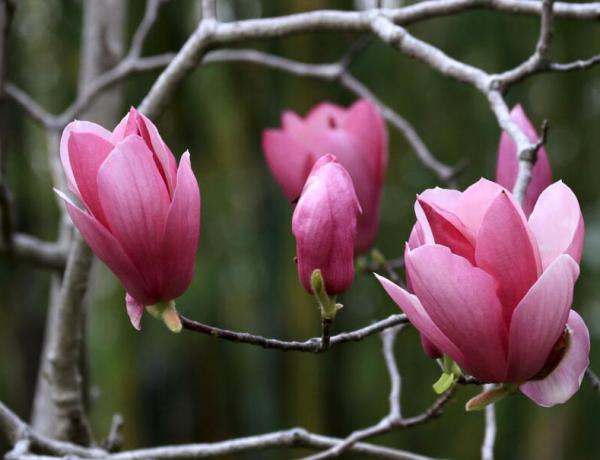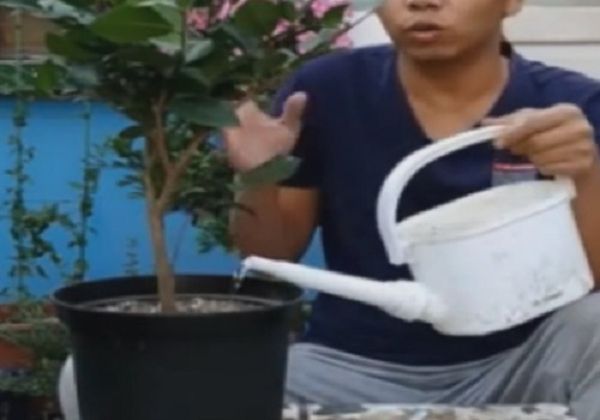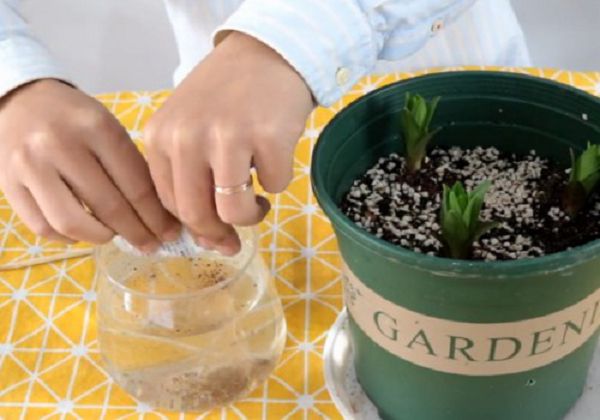How to fertilize purple magnolia?

How to fertilize Magnolia correctly? Magnolia is a deciduous tree or small tree of Magnoliaceae. There are also places called Magnolia, Magnolia, Magnolia. It is an endemic tree species in various provinces of the Yangtze River Basin in China, and it is now planted as a large number of greening tree species in North China and other areas. Because its florescence is in spring, it blossoms very early. Before other tree species sprout, it is already full of flowers on the branches. It is even more graceful.
Because of its tall tree shape, magnolia is often used as road greening and courtyard planting tree species, and is relatively extensive in management. When planting courtyard greening, in order to produce more bright flowers, the fertilizer of all elements of nitrogen, phosphorus and potassium should be applied at least twice a year.
1. Correct fertilization time, types of fertilizer and methods of use. The best time for the first fertilization should be at the end of flowering, when the leaf buds are just spitting out green. Not before the plant blossoms. As the plant blossoms a large number of flowers, and then to enter the leaf bud, the growing period of branches, the plant will consume a lot of nutrients. Therefore, after the flower fade, it is the most appropriate time to fertilize the plant before sprouting branches.
Naturally, the types of fertilizers used are mainly composed of nitrogen, phosphorus and potassium. Common compound fertilizers can be used, and all kinds of fermented oil meal fertilizers and livestock manure can be used. However, it is necessary to accumulate, ferment and mature as much as possible before use, or keep away from the 80cm of the plant when fertilizing to ensure the safety of the plant.
2, fertilizer application amount and fertilization method: use compound chemical fertilizer, each plant can use 0.5kg to 0.8kg, can dig three to four holes around the plant, the depth is 30-40cm. If you use fermented cake fertilizer, the dosage can be about 2-3 kg, which is also divided into three to four potholes. The use of livestock manure can be appropriately increased to 5-6 kg, but also can be sprinkled with a small amount of compound fertilizer.
3, the second fertilization: after the spring flower shedding fertilizer, there is basically no more fertilization in the first half of the year, until September and October, some buds are produced on the side branches and the top of the plant, when the plant gradually stops growing, and with the decrease of the temperature day by day, the plant leaves yellowing and falling off. At this time, the plant can be fertilized for the second time, and the fertilization method and dosage are the same as in spring.
After this fertilization, it can fully meet the nutrients needed for spring flowering. In addition, after the flowers fade in spring, the plant can be pruned. Cut off the thin and overdense branches, and cut them short to grow them. After the emergence of new branches, it is necessary to combine the heart-picking and topping work to control the tree potential, so as to promote the plant to germinate more lateral branches and differentiate more flower buds.
Related
- Fuxing push coffee new agricultural production and marketing class: lack of small-scale processing plants
- Jujube rice field leisure farm deep ploughing Yilan for five years to create a space for organic food and play
- Nongyu Farm-A trial of organic papaya for brave women with advanced technology
- Four points for attention in the prevention and control of diseases and insect pests of edible fungi
- How to add nutrient solution to Edible Fungi
- Is there any good way to control edible fungus mites?
- Open Inoculation Technology of Edible Fungi
- Is there any clever way to use fertilizer for edible fungus in winter?
- What agents are used to kill the pathogens of edible fungi in the mushroom shed?
- Rapid drying of Edible Fungi



